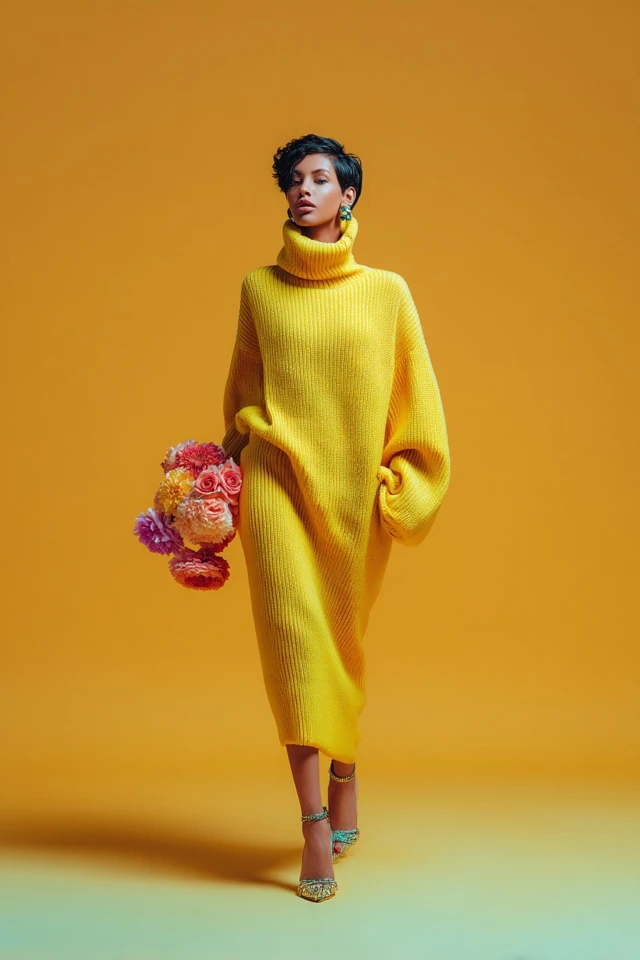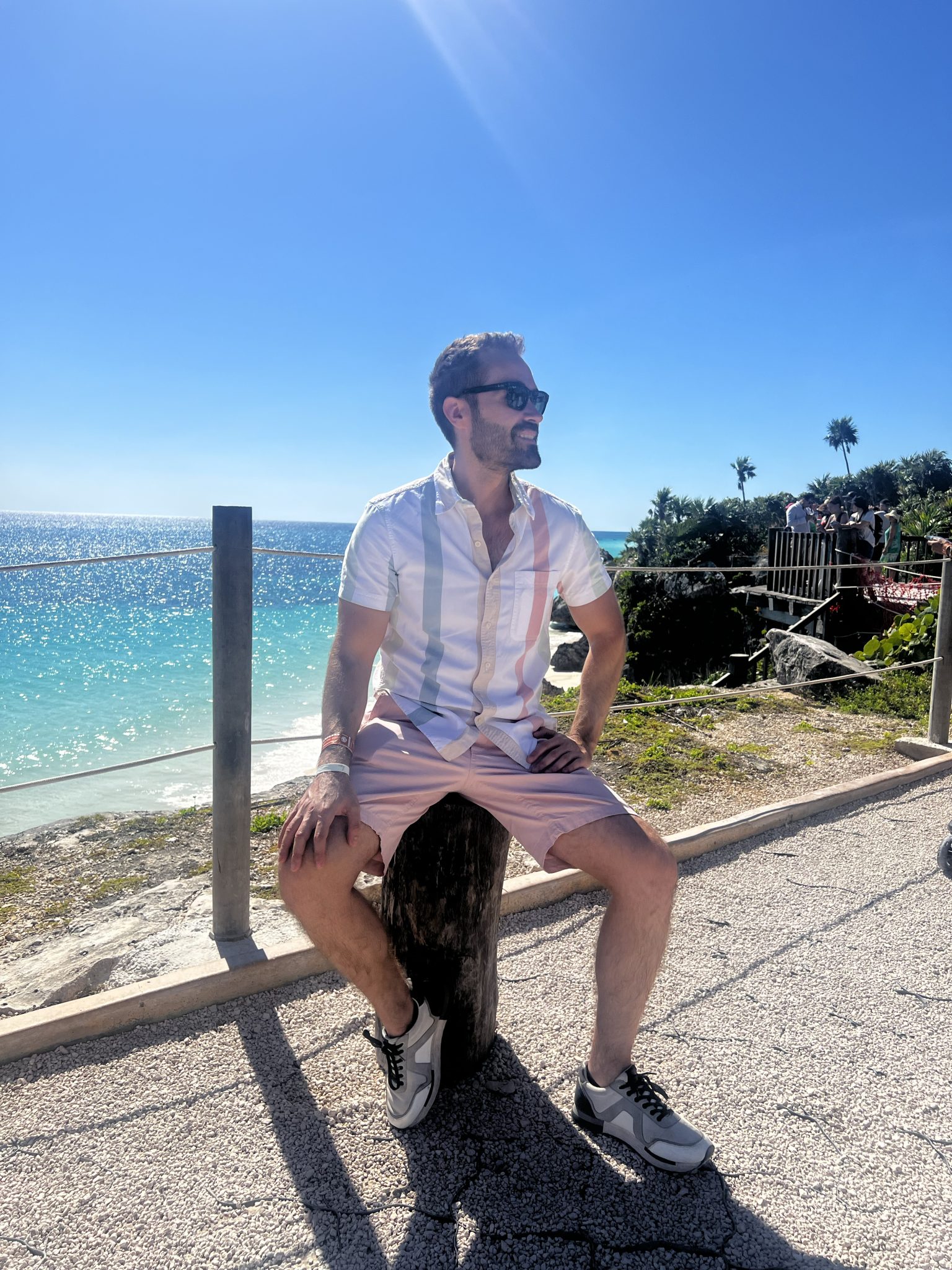Introduction
I remember the first time I slipped into a bold, ribbed turtleneck in a daring shade of burgundy—it was like stepping into a different version of myself. The texture hugged my neck just right, and the rich color made me feel both powerful and cozy at once. It transported me to an era where fashion was unapologetically expressive, and color was a statement of identity. That instant connection with my outfit reminded me how transformative the right clothing and color can be in shaping our presence and confidence.
There’s something inherently captivating about 90s fashion, particularly the statement turtleneck. This simple yet striking piece became an icon of effortless cool and smart styling. More than just a garment, it served as a bold canvas to explore color palettes that communicated mood, personality, and intention. Understanding the nuances of these colors—why they resonate and how they influence perception—is essential for anyone seeking to master style from both an aesthetic and psychological perspective.
About the Author and My Trend Boutique
This post delves deep into the statement 90s turtleneck color palette, merging my expertise in fashion design and color psychology to unpack how these vibrant hues can elevate your wardrobe. Whether you’re looking to reinvent your style, dress to impress, or simply honor a beloved trend with a modern twist, this comprehensive guide will illuminate the power of color and fabric in your fashion journey.
Foundational Concepts
Before we explore the specific colors dominating 90s turtlenecks, it’s vital to ground ourselves in some foundational concepts: color psychology, trend forecasting, and dressing to impress. Each plays a crucial role in helping us harness the true potential of fashion.
Color Psychology
Color psychology studies how hues influence human behavior and emotions. In fashion, it serves as the bridge between what we wear and how we feel. For instance, warm colors like reds and oranges often evoke energy and passion, while cooler tones such as blues and greens induce calm and trust. My research has shown that wearing colors aligned with your personality or mood can boost confidence, positively affect how others perceive you, and even improve social interactions.
Trend Forecasting
Trend forecasting is the process of predicting what styles, colors, and fabrics will gain popularity. It synthesizes cultural movements, economic indicators, and technological advances to anticipate changes. The resurgence of 90s turtlenecks exemplifies how cyclic fashion is. Many pieces once considered retro have re-entered wardrobes, blending nostalgia with contemporary sensibilities. Understanding trends allows you to integrate fresh elements without losing personal authenticity.
Dressing to Impress
Dressing to impress isn’t about superficial glamour. It’s about choosing clothing that communicates your values, professionalism, and self-worth. When combined with an understanding of color and fit, your attire can open doors and boost your self-assuredness. Statement turtlenecks, especially in carefully curated palettes, are excellent tools for making lasting impressions in both casual and formal contexts.
Picture Gallery
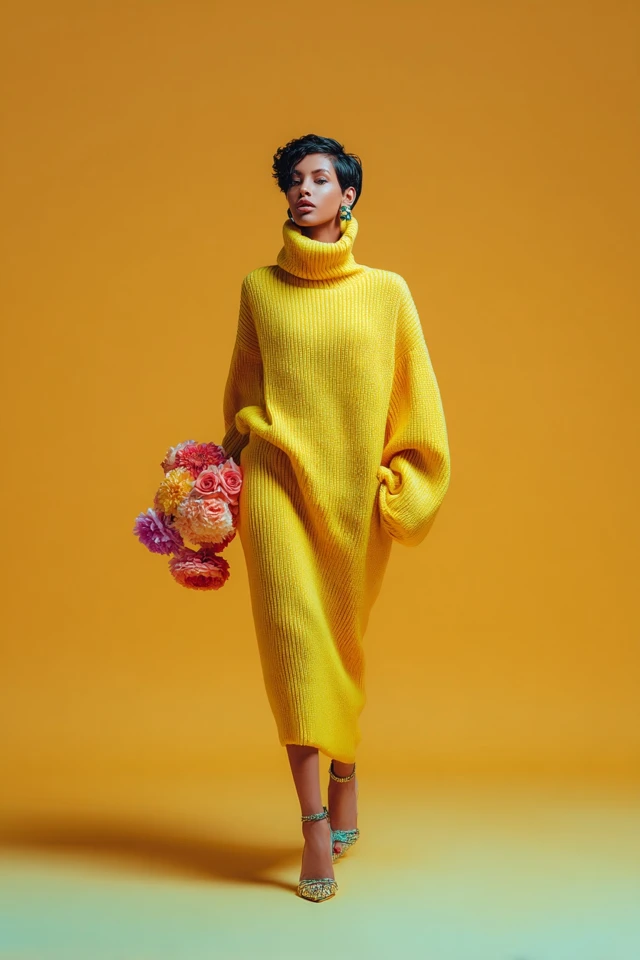
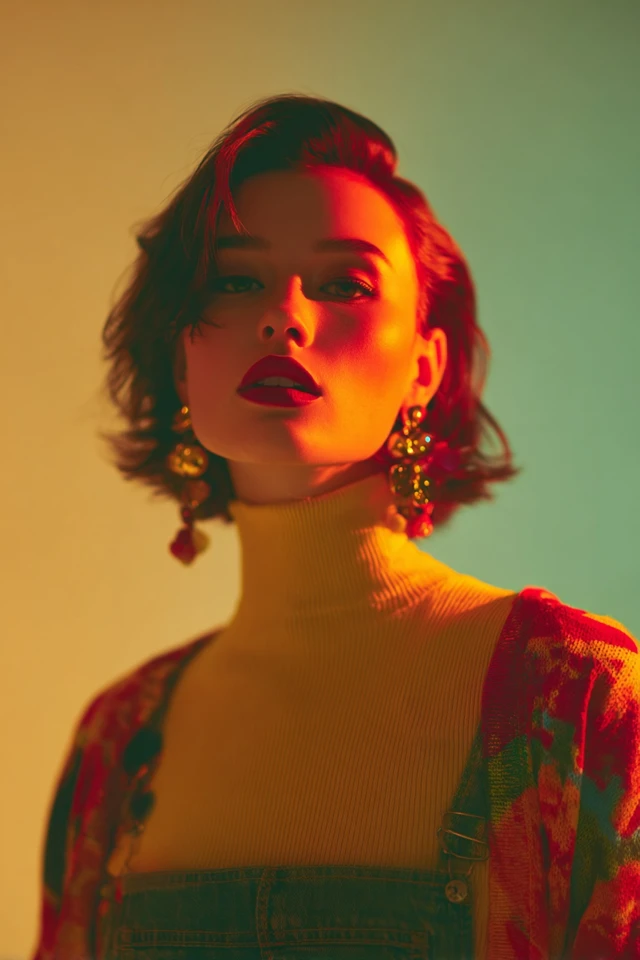
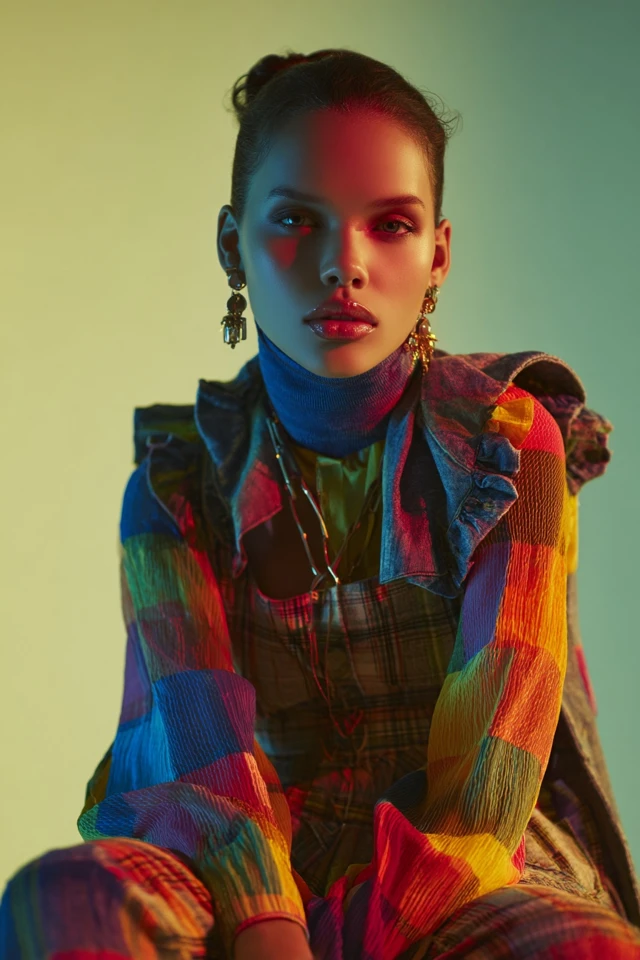
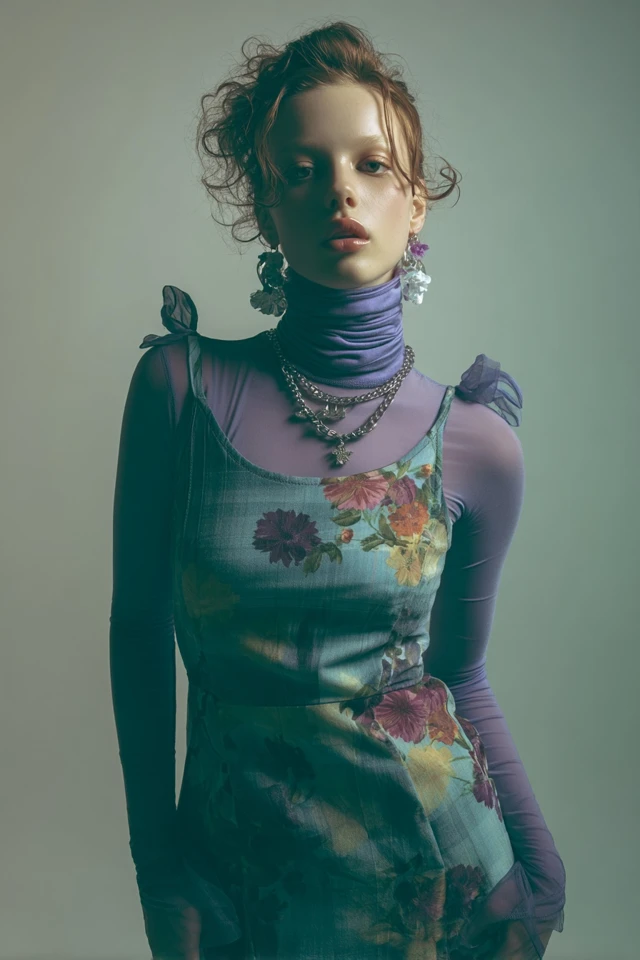
Color Psychology & Emotional Impact
Colors are far more than visual stimuli—they shape feelings and social dynamics in subtle but profound ways. When you select a turtleneck color thoughtfully, you’re setting the tone not just for your outfit, but for your entire presence.
Red: Evokes passion, power, and confidence. A red turtleneck immediately commands attention and communicates assertiveness. It’s perfect for situations where making an energetic impression matters.
Black: Symbolizes sophistication, mystery, and formality. A black turtleneck can ground your look, lending elegance while allowing accessories or makeup to pop.
Mustard Yellow: Associated with optimism and creativity. It brightens the face and radiates warmth, making it an excellent choice for casual, uplifting environments.
Deep Plum: Conveys luxury and introspection. It’s subtle yet striking, ideal for adding depth and a touch of intrigue.
Teal and Aqua Blues: Bring calmness and clarity. These shades connect to tranquility and focus, making them great for professional or social settings where composure is valued.
The science of first impressions underscores how people make rapid judgments based on visual cues, often within seconds. The colors you wear and their saturation and undertones contribute directly to these snap perceptions, influencing trustworthiness, warmth, and competence.
Personal Style & Body Type Considerations
While color is foundational, how the color interacts with your body shape and complexion determines its ultimate impact. The 90s turtleneck, with its close-fitting neckline and sleek silhouette, can either highlight or challenge various body attributes depending on styling choices.
Silhouettes and Fabrics
- Hourglass Figures: Embrace fitted turtlenecks that accentuate the waist. Stretchy fabrics like modal or cotton blends provide comfort without sacrificing shape.
- Rectangle Shapes: Opt for turtlenecks with texture or subtle volume (e.g., ribbing) to add dimension and soften angles.
- Apple Shapes: Choose looser, draped styles that skim the torso while maintaining structure at the neck.
- Pear Shapes: Focus the statement on the upper body with bold color turtlenecks paired with darker bottoms for balance.
Complexions and Hue Choices
Color harmony with your skin undertone is key:
- Warm Undertones: Look radiant in mustard, burnt orange, olive green, and warm reds. Avoid overly cool blues or icy shades which can wash out the complexion.
- Cool Undertones: Shine in royal blue, plum, emerald, and berry hues. Warm yellows or oranges may not be as flattering.
- Neutral Undertones: Experiment broadly but focus on balanced tones like teal, soft rose, and classic black or white.
Quick Style Alignment Quiz
- Do you prefer your clothing to emphasize curves or create a streamlined silhouette?
- Are you drawn to bold colors, neutrals, or soft pastels?
- How much attention do you want your upper body to receive?
- What fabrics feel comfortable against your skin for extended wear?
Answering these questions honestly will guide you in selecting turtleneck colors and styles that enhance your individuality while celebrating the 90s vibe.
Current Trends & Timeless Classics
The current fashion landscape is witnessing a vibrant revival of 90s-inspired statement turtlenecks, featuring rich jewel tones and occasionally unexpected pops of neon. Designers blend nostalgia with modern functionality, injecting bold hues into refined knitwear silhouettes.
Timeless classics remain dominant anchors—a black merino wool turtleneck or a cream cashmere version will forever be wardrobe essentials. These pieces provide a versatile foundation onto which trendy colors like sapphire blue or spicy terracotta can be layered.
For sustainable style, incorporate trending colors into capsule wardrobes dominated by neutral staples. This balance ensures your look is simultaneously cutting-edge and enduring. Pair a mustard yellow turtleneck with high-waisted dark denim and simple gold accessories for an effortlessly cool, current-day outfit.
Practical Tips & Recommendations
Shopping Smart: Prioritize quality fabrics—look for natural fibers like merino wool, cotton blends, or cashmere. These keep you comfortable, maintain shape, and display vibrant colors more vividly.
Wardrobe Maintenance: Gentle washing and flat drying preserve knitwear integrity and prevent color fading. Avoid chlorine bleach and opt for color-safe detergents.
Layering: Use turtlenecks under blazers, dresses, or oversized sweaters to create dimension. Experiment with contrasting or complementary color combos—for example, a plum turtleneck beneath a camel trench coat.
Accessories: Pair with statement earrings or scarves in neutral hues to keep the focus on the turtleneck’s color. For bold styling, mix different textures such as leather gloves or metallic belts.
Color Combos to Try Now:
- Deep teal turtleneck with rust-colored corduroys
- Classic black turtleneck paired with red lipstick and gold jewelry
- Mustard yellow turtleneck layered with denim jacket and white sneakers
- Rich burgundy top under a cream knit cardigan for cozy contrast
FAQs
- Q: How do I find my signature turtleneck color?
A: Start with your skin undertone and personality traits. Experiment with a few staples in warm and cool palettes, then note which shades boost your confidence and garner compliments. - Q: Can I incorporate statement 90s turtlenecks into a professional wardrobe?
A: Absolutely. Pair vivid turtlenecks with tailored blazers or pants in muted tones to achieve a polished yet fashionable appearance. - Q: What budget should I set for investing in quality turtlenecks?
A: Aim for mid to high-range pricing to ensure durability, especially for natural fibers. However, affordable brands now offer surprisingly good quality—prioritize fit and fabric. - Q: How can I build a capsule wardrobe featuring statement turtlenecks?
A: Select 3-5 turtlenecks in versatile colors that align with your lifestyle. Mix them with neutral bottoms and layering pieces, focusing on compatibility and ease of styling. - Q: Are there any color combinations to avoid with 90s turtlenecks?
A: Be cautious with pairing two intense, clashing hues (e.g., bright neon with equally bright pink). Instead, balance bold colors with neutrals or softer tones for cohesion.
Conclusion
Embracing the statement 90s turtleneck color palette offers more than a mere nod to nostalgia; it’s an invitation to explore the fascinating intersection of color psychology and personal style. The rich hues and textured fabrics not only elevate your outfit but also impact how you feel and how you are perceived by the world. By understanding your complexion, body type, and the emotional impact of color, you can craft compelling, expressive ensembles that make dressing to impress both intuitive and fun.
I encourage you to experiment boldly with these timeless silhouettes and vibrant colors—your wardrobe is a living reflection of your evolving self. Share your thoughts, favorite colors, and styling tips in the comments. And if you found this guide helpful, subscribe for more insights on fashion, trends, and the psychology behind style choices.

